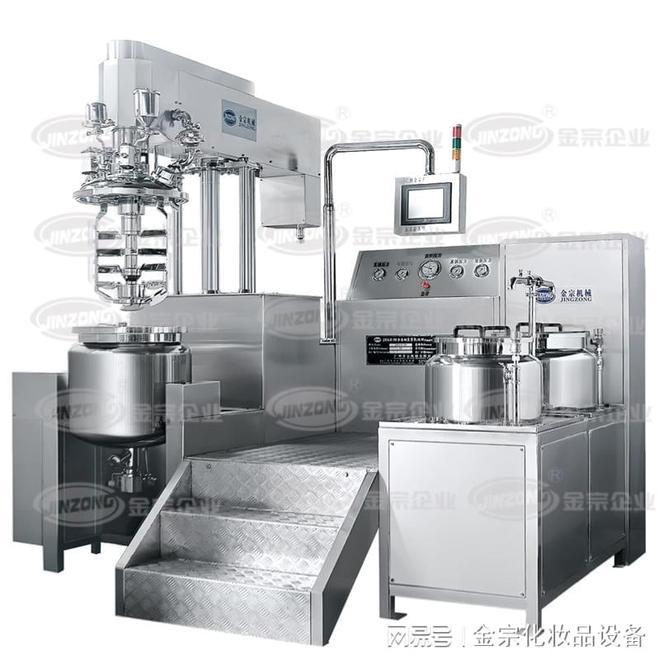Compared to general fine chemicals, the production process of cosmetics is relatively simple. The main production process is emulsification. Follow the editor of Jinzong Enterprise to understand what emulsification is? What are the emulsification methods? What are the factors that affect emulsification?
Emulsification is a phenomenon in which a liquid is uniformly dispersed in tiny droplets in another immiscible liquid. Emulsification is a liquid-liquid interface phenomenon where two immiscible liquids, such as oil and water, are divided into two layers in a container, with less dense oil on the upper layer and more dense water on the lower layer. If appropriate surfactants are added and stirred strongly, the oil is dispersed in water to form an emulsion, which is called emulsification.
The emulsification methods for preparing emulsions include not only the primary soap method, the agent in water method, and the agent in oil method, but also oil-water mixing method, phase inversion emulsification method, and LEE (also known as low-energy emulsification method).
Influencing factors:
1. Emulsification equipment
The main mechanical equipment for preparing emulsions is an emulsifier, which is an emulsification equipment that evenly mixes oil and water phases. There are three main types of emulsifiers: an emulsion mixer, a colloid mill, and a homogenizer. The type, structure, performance, etc. of an emulsifier are closely related to the size (dispersion) of emulsion particles and the quality (stability) of the emulsion.
2. Temperature
The emulsification temperature has a significant impact on the quality of emulsification, but there is no strict temperature limit. For example, if both oil and water are liquids, emulsification can be achieved by stirring at room temperature. The general emulsification temperature depends on the melting point of the high melting point substances contained in the two phases, as well as factors such as the type of emulsifier and the solubility of the oil and water phases. In addition, the temperature of the two phases should be kept close to the same, especially for wax and lipid phase components with high melting points (above 70 ℃). When emulsifying, low-temperature aqueous phase should not be added to prevent wax and lipid crystals from precipitating before emulsification, causing blocky or rough uneven emulsions.
3. Emulsification time
The emulsification time obviously affects the quality of the emulsion, and the determination of emulsification time depends on the volume ratio of the oil phase to the water phase, the viscosity of the two phases and the viscosity of the generated emulsion, the type and amount of emulsifier, and the emulsification temperature. However, the amount of emulsification time is closely related to the efficiency of the emulsification equipment, and can be determined based on experience and experiments.
4. Mixing speed
Emulsification equipment has a significant impact on emulsification, one of which is the effect of stirring speed on emulsification. Moderate stirring speed is used to fully mix the oil and water phases. If the stirring speed is too low, it is obvious that the purpose of full mixing cannot be achieved. However, if the stirring speed is too high, bubbles will be introduced into the system, making it a three-phase system and making the emulsion unstable. Therefore, it is necessary to avoid the entry of air during stirring, and the vacuum emulsifier has excellent performance.

|
联系我们
全国服务热线 肇庆一分厂:广东省肇庆高新区(大旺)康泰街3号 肇庆二分厂:广东省肇庆高新区(大旺)建设路36号 E-mail: jinzong@jinzong.com.cn
|


